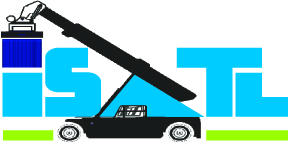
Training & development is a process in which Ispahani Summit Alliance Terminals Limited (ISATL) train their employees in specific skills and further monitor their performance constantly to help them develop overall personality and workplace safety.
Here are different goals and objectives the ISATL’s can set before implementation of training and development program-
To impart skills- Under this objective the employees are trained to operate the equipment and machinery correctly. The goals are set to improve work efficiency and to reduce wastage of time.
To Educate: The objective is linked with providing information about theoretical concepts and provides hands-on experience of the task. The goal is to improve reasoning power and judgment skills of employees.
To Enhance Knowledge: The objective here is to improve behavioral knowledge of the employee. The goal is to enhance understanding of human relations, management and business environment among employees.
Ethics: The objective is to provide knowledge about ethical conduct in the organization. The goal is to regulate the conduct of the employee in the organization.
Change in attitude: The objective of the training is to change the attitude of the employees in terms outlook, reaction, feelings and work beliefs. The goal is to improve commitment and satisfaction of the employee by providing required motivation.
Extraordinary Skills: To impart extraordinary skills such as critical decision making, problem-solving and industrial research. The goal is make employee ready to face future challenges.
ISATL has maintaining deference types of training methods to providing training and development program. Here are few commonly used training methods-
Orientations: It is generally used to introduce the newly joined employee to the organizational work culture. It includes few lecture sessions, meetings with supervisor and information regarding the history of the organization. This training is used to make sure the newcomer feels welcomed in the organization and become aware about their work profile, goals and objectives of organization, policies as well as rules and regulations to be followed.
Lectures: This is a one-way communication method, mostly used when important information has to be conveyed to large number of employees. The information can be related to new updates in policies or any change management action in the organization.
Audiovisual Training: In this type of training PowerPoints and videotapes are used to expose employees to the real life situation. The presentation includes the situation and how the problem stated in the situation is resolved. It helps employee to gain knowledge about diverse corporate situations and provide them an appropriate direction to take decisions.
In this connection ISATL continuing as below:
HSSE Training: To ensure Health, Safety, Security & Environment (HSSE) describes the processes or activities (planning, implementation, control, and optimization) to employees for protection, especially in the working environment.
Fire Training: To ensure over all fire safety to all employee conduct fire training for evaluation process, rescue process, firefighting process, reporting in assembly point and overall having ideas about in placed fire safety equipment’s.
First Aid: Provide immediately first aid treatment to injured person ISATL has well trained first aider. They are given training at regular intervals.
IT/Cyber security Training: To protect cyber-crime regular intervals given training to all computer/ laptop user with maintaining IT policies strictly.
Training to Drivers, forklift & heavy equipment’s operators: Regular interval providing training to prime mover drivers, forklift operators & reach stacker operators about driving rules & regulations, safely operate heavy equipment’s.
Electrical Safety: To protect all electrical incident, safely use of electrical devise & maintain safety on electrical maintenance activities to electrician regular interval.
On Job Training: Increased job satisfaction, employee motivation, efficiencies in processes, capacity to adopt new technologies & methods, innovation in strategies & products and reduced employee turnover.

